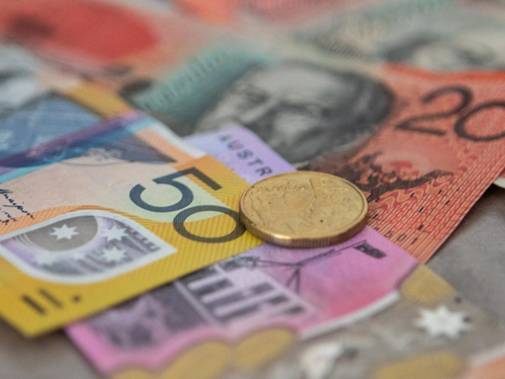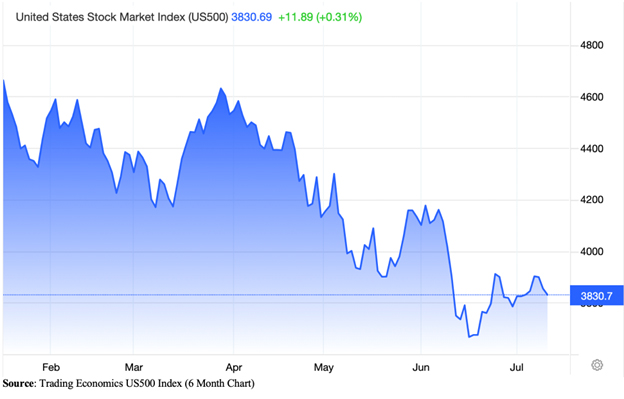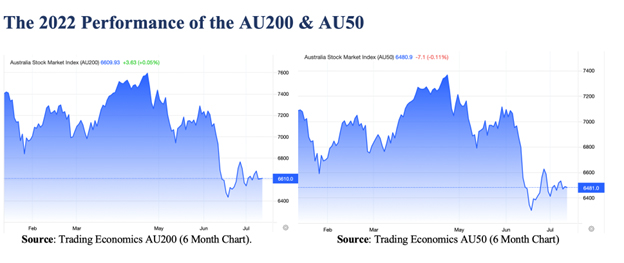How to Take Advantage of Currency Fluctuations?

The Pendulum Swings Both Ways – Let Momentum Guide Your Trades
The financial markets are continually in a state of flux. Trends, cycles, patterns, upswings and downswings are par for the course. Unfortunately, 2022 is a challenging year for the financial markets. The bullish momentum of the last couple of years has faded. Inflationary pressures, supply chain bottlenecks, rising interest rates, and many geopolitical challenges have roiled the financial markets. Wall Street bulls have retreated; now, the bears are having a field day.

We all knew the bull run was unsustainable. Led by the US markets' unprecedented run of form since President Obama, markets reached all-time highs under President Trump. Stock-market gains were unsustainable, yet millions of traders and investors continued to plough their hard-earned funds into stocks, commodities, and indices. Backed by accommodative monetary policy at the Fed and other reserve banks, everything was peachy.
Under President Biden, the US financial markets have suffered major setbacks. Multi-trillion dollar stimulus packages have resulted in runaway inflation. With the Russia/Ukraine conflagration and surging energy prices, markets are in a state of panic. A multi-year recovery is on the cards. As expected, the global economy catches a cold when the US markets sneeze. Australian financial markets are markedly off their best levels for the year, with strong downward momentum driving markets. Sellers dominate; buyers are few and far between.
How to Gather Insights into Forex Pairs with the DXY?
The US dollar index (DXY), a reliable indicator of global trading sentiment, is currently hovering near its 52-week high of 108.56 (as of July 12, 2022). This measure of the USD pits the dollar against a basket of weighted currencies, notably the EUR, GBP, JPY, SEK, CAD, and CHF. This index is particularly important for global trading activity, notably currency trading. When the dollar strengthens, the index rises. When the dollar weakens, the index falls. Currently, the USD is enjoying a purple patch. This means other countries are selling their currencies and buying the USD as a haven in uncertain times.
 Momentum trading favours the greenback, as evidenced by a glut of call options on USD-denominated currency pairs. For the year-to-date, the USD/AUD currency pair has gained ground from 1.3759 on January 3, 2022, to its current trading level of 1.4784 on July 12, 2022. Similar Forex trading trends are evident with the USD/GBP, USD/EUR, and USD/JPY currency pairs – hence the bullish market indicator with the DXY. Trusted forex trading strategies focus on the current state of the market - such as momentum trading strategies.
Momentum trading favours the greenback, as evidenced by a glut of call options on USD-denominated currency pairs. For the year-to-date, the USD/AUD currency pair has gained ground from 1.3759 on January 3, 2022, to its current trading level of 1.4784 on July 12, 2022. Similar Forex trading trends are evident with the USD/GBP, USD/EUR, and USD/JPY currency pairs – hence the bullish market indicator with the DXY. Trusted forex trading strategies focus on the current state of the market - such as momentum trading strategies.
While stocks are persona non-grata at this time, opportunities abound. Indeed, the Oracle of Omaha (Warren Buffet) once famously quipped, 'Be fearful when others are greedy, and greedy when others are fearful.' A sanguine allusion to buying the dip and profiting from value propositions as an investor. Stocks prices have deflated of late, and value investing is in the offing. While stocks present as risky, forex trading is enjoying tremendous volatility. The best forex trading strategies factor multiple macroeconomic variables into the equation. It's as much about going with the flow as anticipating the effects of tightening monetary policy measures and a run on commodities.
Since commodities like crude oil, gold, silver, copper, iron ore, and the like are dollar-denominated, a stronger dollar impacts demand and pricing. Astute currency traders understand the broader implications of macroeconomic variables, notably economic indicators like CPI, Inflation Rates, Interest Rates, Housing Starts, GDP, Manufacturing PMI, etc. For every major indicator, there are expected results, actual results, and deviations. The degree to which markets factor these changes into pricing mechanisms determines the volatility to expect after the fact. Forex trading tends to focus tremendous liquidity on the major pairs, but minors and exotic pairs have plenty of wiggle room to move in any given session.
MORE



